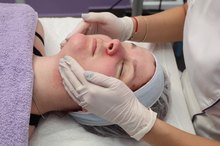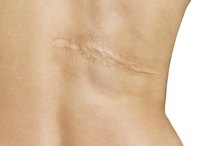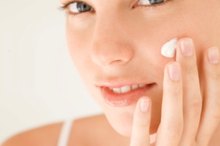Treatments for Melasma in Males
**Melasma is painless, benign skin condition and does not require any type of medical treatment 1. But since it most commonly occurs in highly visible areas such as the face, arms and neck, many men seek treatment to reduce the impact of melasma on their appearance 1.
Definition
Melasma is a condition in which patches of the skin darken and appear brown or gray-brown 1. Only 10 percent of those diagnosed with melasma are men, and while its cause:
- is not known
- family history
- dark skin
- exposure to the sun increase your risk
- according to the American Academy of Dermatology [1](https://www.aad.org/public/diseases/color-problems/melasma 'inline-reference::Melasma
(n.d.). ').
Preventive Treatment
Tazorac for Wrinkles
Learn More
The first step is to reduce your risk for developing melasma by applying sunscreen every day, all year long 1. The AAD recommends choosing a sunscreen that protects from both UVA and UVB rays and has a sun protection factor, or SPF, of 30 or more. You may also consider using zinc oxide and titanium oxide to block the sun when you’re outdoors for longer periods of time.
Medical Treatment
Melasma is treated by lightening the discoloration with bleaching agents 1. Creams containing an active ingredient called hydroquinone are available in most drug stores, but your physician can prescribe hydroquinone in a higher concentration that’s more effective. Other prescription medications that may be used to treat melasma include tretinoin, corticosteroids and azelaic acid 1. If your melasma does not respond to topical creams, a superficial chemical peel or microdermabrasion may help by removing the upper layers of skin 1.
Warnings
How to Remove Hyperpigmentation on Your Face
Learn More
Hydroquinone must be applied very carefully so that it does not come in contact with the surrounding skin because normal skin may also be bleached along with the darkened patch. The medication also should not be applied on irritated or injured skin. It’s very important to protect your skin from the sun when you’re using hydroquinone cream.
Common side effects of hydroquinone include dryness, redness or burning, according to Drugs.com. Obtain immediate medical help if you experience severe reactions such as rash, hives, difficulty breathing, tightness in the chest, swelling or blistering.
- Hydroquinone must be applied very carefully so that it does not come in contact with the surrounding skin because normal skin may also be bleached along with the darkened patch.
Considerations
Do not use products such as soap, after shave or lotions that irritate your skin, because they may cause the melasma to worsen, according to the AAD 1. After the melasma clears up, continue wearing sunscreen to help prevent it from reoccurring 1.
Related Articles
References
- Melasma. (n.d.).
- Melasma: Who gets and causes (n.d.).
- Rajaratnam R., et al. (2010). Interventions for melasma. DOI:
- Passeron T, Picardo M. Melasma, a photoaging disorder. Pigment Cell Melanoma Res. 2018;31(4):461-465. doi:10.1111/pcmr.12684
- Hollinger JC, Angra K, Halder RM. Are Natural Ingredients Effective in the Management of Hyperpigmentation? A Systematic Review. J Clin Aesthet Dermatol. 2018;11(2):28-37.
- Ogbechie-Godec OA, Elbuluk N. Melasma: an Up-to-Date Comprehensive Review. Dermatol Ther (Heidelb). 2017;7(3):305-318. doi:10.1007/s13555-017-0194-1
- American Society for Dermatologic Surgery Association. Position on Topical Hydroquinone. Updated August 2019.
- Kim HJ, Moon SH, Cho SH, Lee JD, Kim HS. Efficacy and Safety of Tranexamic Acid in Melasma: A Meta-analysis and Systematic Review. Acta Derm Venereol. 2017;97(7):776-781. doi:10.2340/00015555-2668
- American Academy of Dermatology Association. Melasma: Diagnosis and Treatment.
Writer Bio
Sandi Busch received a Bachelor of Arts in psychology, then pursued training in nursing and nutrition. She taught families to plan and prepare special diets, worked as a therapeutic support specialist, and now writes about her favorite topics – nutrition, food, families and parenting – for hospitals and trade magazines.









